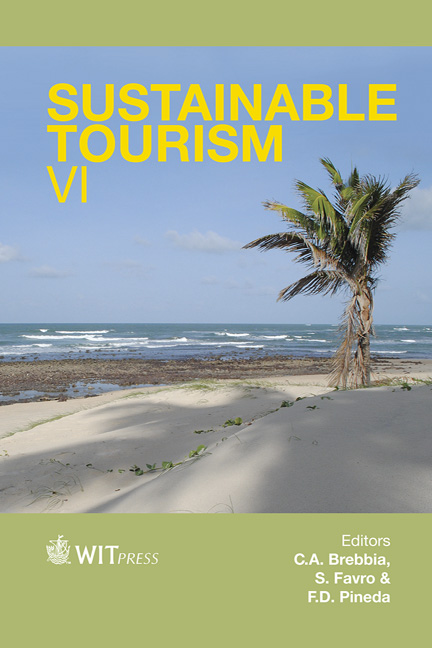A Sustainable Urban Tourism Indicator In Malaysia
Price
Free (open access)
Transaction
Volume
187
Pages
13
Published
2014
Size
349 kb
Paper DOI
10.2495/ST140111
Copyright
WIT Press
Author(s)
M. K. Razali & H. N. Ismail
Abstract
This paper presents a critical review on indicators for measuring sustainable urban tourism development in Malaysia. It has been debated that the contribution of urban tourism in the economy and local community’s development are difficult to be determined due to the multiple discipline that clouds the existence of urban tourism as an independent sector. Arguably, these indicators failed to measure the level of achievement for urban tourism activities, and the economic terms are less justified. Since the concept of sustainable tourism is introduced, the role of indicator is increasingly important in measuring economic and social advantages, thus the development of the city also needs to be monitored with suitable indicator. The idea is to assess and monitor changes in urban economies for tracking the progress towards sustainable development. Therefore, the center of debate in developing urban tourism indicators are (1) to identify and measure the entire range of interrelated environmental, social and economic impacts in tourism development, and (2) to obtain accurate information for responsible decision. Several approaches have been made in the context of Malaysia although the indicators are not directly related to the perspective of urban tourism, such as Malaysian Quality of Life Index (MQLI) and Malaysian Urban Indicators Network (MURNINet). For example, MURNINet identified heritage and tourism as a sub-component of the indicator. As there is need to improve these indicators, situational analysis based on literature review in this paper will highlight the use of existing sustainable indicators and their relevancy to urban tourism development and economy.
Keywords
sustainable tourism, urban tourism, urban development, indicator.





